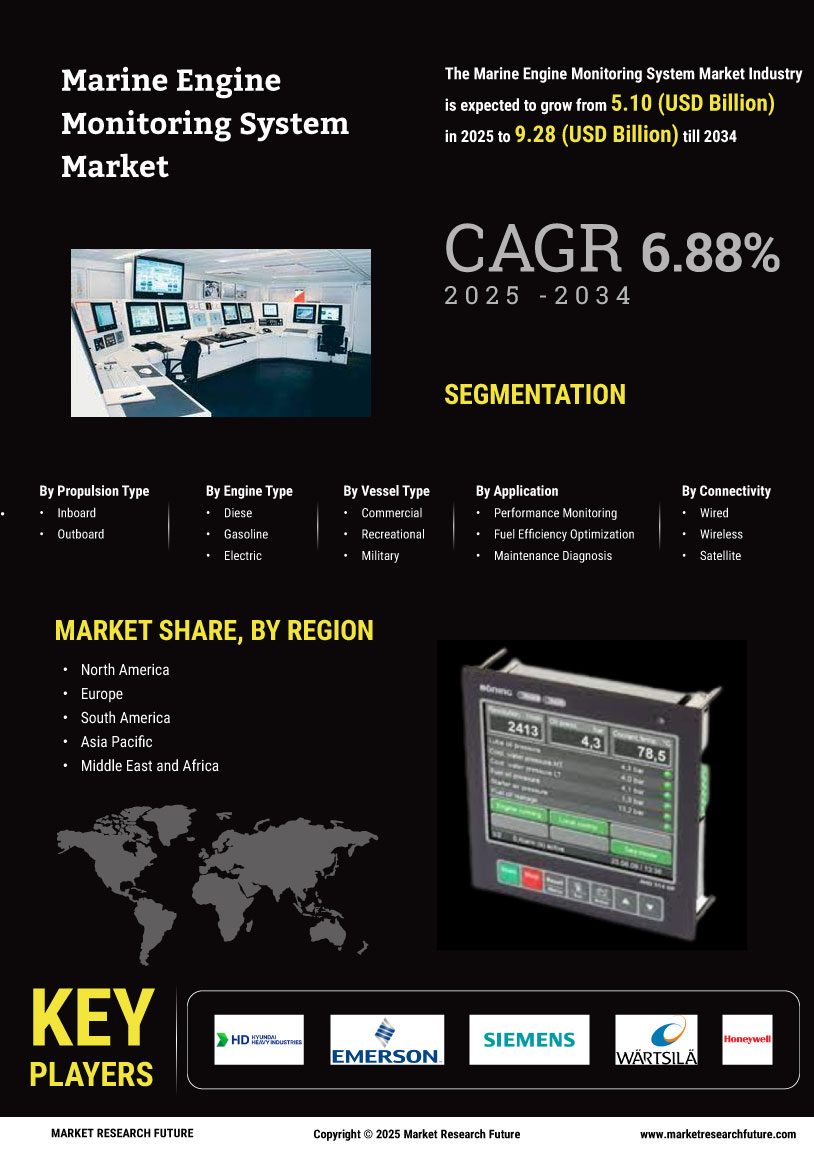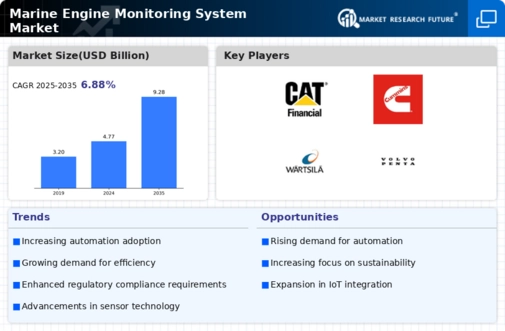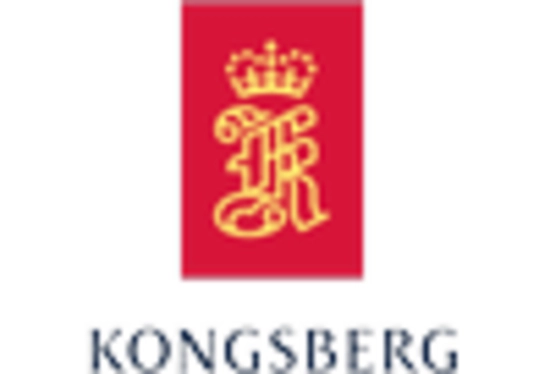Expansion of the Maritime Industry
The expansion of the maritime industry is a crucial driver for the Marine Engine Monitoring System Market. As global trade continues to grow, the demand for efficient and reliable marine transportation is on the rise. This expansion is leading to an increase in the number of vessels and, consequently, a greater need for effective engine monitoring solutions. The market is projected to grow as shipping companies seek to enhance operational efficiency and reduce maintenance costs. Furthermore, the increasing complexity of modern vessels necessitates advanced monitoring systems that can provide comprehensive insights into engine performance. This trend is likely to fuel the growth of the Marine Engine Monitoring System Market.
Increasing Demand for Fuel Efficiency
The Marine Engine Monitoring System Market is experiencing a notable surge in demand for fuel efficiency solutions. As fuel prices continue to fluctuate, operators are increasingly seeking systems that optimize engine performance and reduce fuel consumption. This trend is underscored by the fact that fuel costs can account for a significant portion of operational expenses in marine transportation. By implementing advanced monitoring systems, companies can achieve better fuel management, leading to potential savings of up to 20% in fuel costs. This growing emphasis on efficiency is likely to drive the adoption of sophisticated monitoring technologies, thereby propelling the Marine Engine Monitoring System Market forward.
Growing Focus on Safety and Risk Management
Safety and risk management are becoming paramount in the Marine Engine Monitoring System Market. With the rising number of maritime incidents, operators are prioritizing systems that enhance safety protocols and mitigate risks. Monitoring systems that provide real-time alerts and diagnostics can significantly reduce the likelihood of accidents and equipment failures. This focus on safety is not only a regulatory requirement but also a competitive advantage for companies. As a result, investments in advanced monitoring technologies are likely to increase, driving growth in the Marine Engine Monitoring System Market. The emphasis on safety is expected to shape the future landscape of marine operations.
Technological Innovations in Monitoring Systems
Technological innovations are reshaping the Marine Engine Monitoring System Market, with advancements in sensor technology, data analytics, and artificial intelligence playing pivotal roles. These innovations enable real-time monitoring of engine performance, allowing for predictive maintenance and reducing downtime. The integration of IoT devices is also enhancing data collection and analysis, providing operators with actionable insights. As a result, the market is witnessing a shift towards more sophisticated monitoring solutions that can improve operational efficiency and safety. The increasing adoption of these technologies is expected to propel the Marine Engine Monitoring System Market, as companies seek to leverage data-driven decision-making.
Regulatory Compliance and Environmental Standards
The Marine Engine Monitoring System Market is significantly influenced by stringent regulatory compliance and environmental standards. Governments and international bodies are imposing regulations aimed at reducing emissions and enhancing safety in marine operations. For instance, the International Maritime Organization has set ambitious targets for reducing greenhouse gas emissions from ships. Consequently, marine operators are compelled to adopt monitoring systems that ensure compliance with these regulations. The market for monitoring systems is projected to grow as companies invest in technologies that not only meet regulatory requirements but also enhance operational efficiency. This regulatory landscape is likely to be a key driver for the Marine Engine Monitoring System Market.

















Leave a Comment